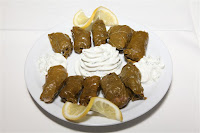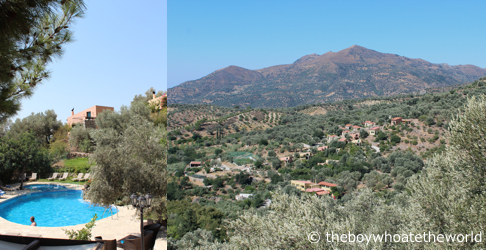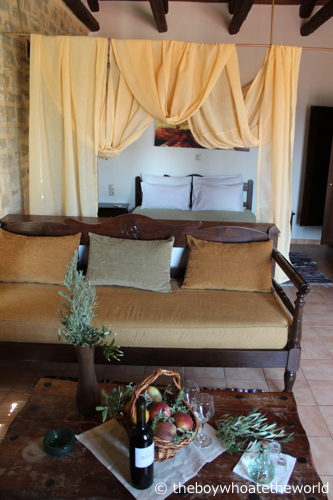Greece’s sacred olive harvest is just around the corner, says June Field!
We’re all fanatic about olive oil these days, but ever wondered how it got on your plate?
Time to get amongst the olive groves and witness the harvest. Come mid October, the Greek countryside comes alive as farmers haul out their nets, and lay them out under their precious trees. The harvest lasts through the winter months of November to January, as an exodus of farm hands can be seen coaxing the ripe green fruit with combs on a long stick, while others use hand held motorised rakes.
This winter, the subject of Greece’s sacred oil, has never been more pivotal. As the economic crisis continues, tens of thousands of Greeks are leaving the cities, returning to their ancestral villages in search of jobs to support themselves until the tourists arriving in spring.
While in
Crete - Greece’s largest and most southerly island – olives are on everyone’s mind.
With over 1.5 million trees and a balmy year round climate, Cretan farmers boast the highest percentage of extra virgin oil, and reputedly the tastiest in the world.
Almost every
dish in Crete has at least a few spoonfuls of oil, from the delicious ‘magierevma’ or oven baked dishes like
moussaka or giant beans called ‘gigantes’ to cake recipes, or simply drizzled over a wobbly sheeps milk cheese called mizithra.
Amazingly, the average person in Greece consumes around 25 kilos per person (compared to 0.5 in northern Europe or the US). And, Cretans use more oil in their healthy diet than the rest of Greece; explaining their long life spans and lack of heart problems.
Once the fruit is three quarters ripe, it’s time to harvest. Bright and early, around 7am the teams of workers, families and recruits head out into the grove with rods, poles or rakes. The fruit drops on to the nets beneath the trees, ready to be collected. Burlap sacks laid out nearby are filled and loaded up in nearby trucks and taken to the local mills, as fast as possible.
It’s important that the olives are treated carefully, not bruised or left out as it affects the quality, or acidity of the oil. If it’s rainy or windy, the harvest pauses. Grey green leaves glisten brilliantly in the winter sun. Like living art, gnarled trunks peek out from swaying branches groaning with fruit. Those olives are treated like precious cargo.
A break for a picnic lunch takes place in the groves (called ‘agrotima’ or ‘eleonas’) joined by women and children often, then back to the hard grind. The final run to the mill happens around 4pm when the light begins to fade. Full sacks are taken to the mill, at the end of each day for processing.
Each farmer has his sacks labelled carefully, while the olives are loaded into the production line. Firstly the olives are cleaned with water, their leaves and stems removed in a feeding hopper. Next, the olives are pressed, and this resulting oil is called the ‘extra virgin’ which Greece excels at. Over 70% of all oil and olives produced in Greece are extra virgin, or top quality.
The farmer waits for his own oil to emerge, a thick pungent grassy smelling green liquid. Homer called it ‘liquid gold’.
Most farmers will store their oil in a metal tank, and later in dark coloured bottles (the light can reduce quality) but never plastic.
This will go on for several days, depending how many trees or groves they own. There are over 4,600 mills around the country; the majority of them concentrated in Crete, and the Peloponnese.
The commercial growers sell off their oil to the big brands, who distribute it around Greece, while a large slice of it goes off to Italy, remarkably, to be rebottled and branded for export around the world.
This year, the sacred olive groves of goddess Athena could grab a star role in Crete’s year round tourism. Demand for agrotourism is on the increase, and next month a six day tour of the Cretan olive harvest is already being booked up by travellers as far away as Singapore and South Africa.
Eleonas’ entrepreneurial owner, Manolis Saridakis is passionate about the environment and the surrounding region of Mt Psiloritis national park.
The locals of Zaros are holding on tight to their local way of life. For them it means growing most of their own food, rearing their own farm animals and sourcing food for the hotel within less than 5 kilometres. ‘We know we have a piece of paradise here. We are 99% full most of the year, our guests tell us that our whole set up is pretty magical.” This influx of gourmet travellers will bring vital spend to the rural economy.
In a recent report, US consulting firm McKinsey predicting that olives can pull Greece out of recession, with a little more organisation and control of the industry. A small country of 11 million people and 5 million workers, it could go back to its ancient roots, literally and grow again.
For more information / images contact: June Field
jfield@threesixtydegrees.net
+ 44 (0) 208 940 9527









